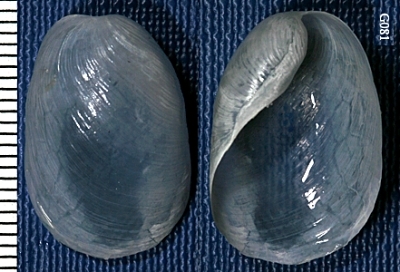Philine angasi from Shark Bay, Western Australia
March 16, 2009
From: Patricia Heithaus


Dear Dr. Rudman,
Several specimens of Philine sp. were collected as part of the Shark Bay Ecosystem Project on the feeding of rays on the intertidal flats near Monkey Mia, WA. I am enclosing photos taken in early July 2008 in hopes that you might be able identify the images to species. Philine were fairly common on the tidal flats and showed almost a two fold variation in size.
Locality: Monkey Mia, Shark Bay, West Australia. Intertidal Flats. approx 25 mm long alive. 16 June 2008. Photo: Patricia Heithaus
I can provide pictures of a higher resolution if they would be helpful. I also have a short video of a burrowing specimen.
Thank you for your assistance in this matter.
Sincerely,
Patricia Heithaus
Heithausp@kenyon.edu
Heithaus, P., 2009 (Mar 16) Philine angasi from Shark Bay, Western Australia. [Message in] Sea Slug Forum. Australian Museum, Sydney. Available from http://www.seaslugforum.net/find/22332
Dear Patricia,
This is almost certainly Philine angasi. This species was originally thought to restricted to New Zealand and southern Australia but there is nothing to separate southern animals from those that have been found in southern Queensland and Western Australia. This species is one of a group with a very thin flattened shell, a very muscular wedge-shaped body, and large calcareous gizzard-plates, two of which are mirror images of each other and the third which is much smaller and bilaterally symmetrical [message #176]. Similar species are found in Europe - Philine aperta, and the northwest Pacific - Philine orientalis.
I would be interested to know if the rays were feeding on the Philine. We have little information on what eats various opisthobranchs and I suspect there is more hidden in scientific reports on the predators. I don't think the digitisation of the world has yet reached the stage where I can Google up lists of prey animals found in the stomach contents of potential predators of opisthobranchs. So if you can short-circuit the process I would be grateful.
I am not sure what you mean by 'a two fold variation in size'. Do you mean their are two size classes or a range of animals from 25 mm to ? Most species of Philine seem to have an annual life cycle, but some of the bbigger species, like P. angasi can last for two or three years. You may have two generations of P. angasi in your sample or you may possibly have two species. The shape of the shell and degree of calcification are two species specific characters to look our for. The other is the shape and degree of calcification of the gizzard plates. Most species have three equal sized and shaped plates. P. angasi is somewhat unusual in its unequal gizzard plates.
Best wishes,
Bill Rudman
Related messages
-
Philine angasi from Bruny Island, Tasmania
From: Julie Marshall, November 24, 2008 -
Philine angasi from sthn Queensland
From: Gary Cobb, November 17, 2008 -
On Philine angasi
From: Bill Rudman, July 30, 1998
